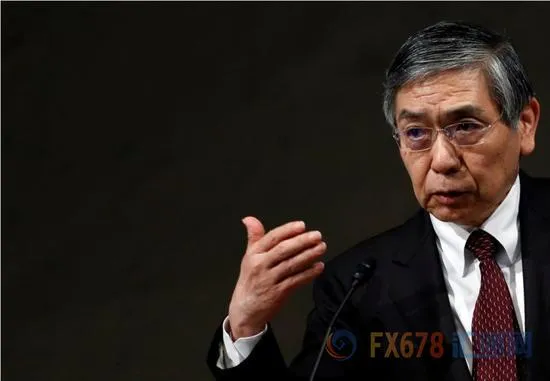BOJ Governor Haruhiko Kuroda's five-year term ends in April 2018. As the right-hand man of Japan's prime minister, Abe, the market is widely expected to be reelected after his term expires and expect his monetary policy to continue until Japan's inflation is above the BOJ's 2% target.

However, the strong expectations in these markets were first questioned last week. The yen rose as the rate of normalization by the Bank of Japan was likely to exceed market expectations. Bank of Japan Governor Haruhiko Kuroda recently emphasized in his speech in Zurich that there is a risk that Japan's current yield on the 10-year Treasury note is zero and that Kuroda's remarks allow investors to re-examine the ultra-loose policy adopted by the central bank over the past two decades.
True, Kuroda said clearly that the purport to ease monetary policy will continue for some time. Since then, there have been some "guidelines" of hawkish policy opinions allegedly coming from the Bank of Japan. Then another central bank member of the board Suzuki Division, made it clear that next year will ease the yield curve control.
If so, this will be the first sign that the Bank of Japan will consider the normalization of interest rates, albeit in Japanese. The euro rose sharply when markets began to smell similar changes at the ECB in 2017. Although the final change in monetary policy is actually not large, the foreign exchange market is very sensitive to the initial hints that the monetary policy may change. The same scene may happen next year in Japan. Global bond yields also respond to any signals from the Bank of Japan that it is considering withdrawing monetary easing.
Until recently, the BOJ's monetary policy in 2017 was very stable with no official hint that the policy will tighten further until inflation reaches its 2% target. Then, Japan's recent strong economic data changed market sentiment. James Malcolm, a keen economic observer at UBS, came out and argued that a surge in capital expenditures would lead to further increases in growth rates and to higher inflation. The strong cyclical prosperity in Asia has led the market to see more economic growth. Of course, expectations of Japan's real GDP have been rising. Moreover, the market has always acknowledged that the decision to fix the fixed rate of return to zero would hurt bank profits and create distortions in the financial sector.
Haruhiko Kuroda emphasized "reversing the risk" more than ever before in his speech in Zurich, arguing that yield curve control (YCC) would weaken bank profits, reduce capital, and cause banks to contract abnormally in the supply of economic credit. The market is also worried that the Bank of Japan's purchase of a stock market ETF may distort the stock market. More importantly, the Bank of Japan may start to worry that the yield curve will lead to unstable monetary policy as inflation expectations heat up. With nominal interest rates fixed, real interest rates will fall as inflation expectations rise, and the Bank of Japan will have to increase its purchases of bonds. This will lead to serious instability in the bond market. In all accepted versions of monetary policy rules (such as the Taylor rule), as inflation rises, the central bank raises real interest rates, and the Bank of Japan will do the opposite next year.
Although the Bank of Japan did not explicitly state this, they are already discussing "natural" attempts to assess the yield curve, a concept that extends the equilibrium interest rate over the entire yield curve. Bank of Japan's deputy governor Hiroshi Nakaso hinted last month that when the MPC thinks the entire yield curve falls too far below the "natural" yield curve, the yield curve will be adjusted and the excess money Stimulate transmission to the economy.
This approach is closely linked with the "normalization" of the Fed's interest rate. Using the Bank of Japan's calculation of the natural yield curve, the Tokyo-based Deutsche Bank economist recently estimated the 10-year equilibrium interest rate to be around 1.7%, and as Japan's potential production starts to rebound, the 10-year equilibrium interest rate Is picking up If this estimate is close to right, Yield Curve Control (YCC) is providing a still very large and rising monetary momentum as the nominal bond yield is fixed around zero. This reasoning will point to some adjustments to the 2018 Yield Curve Control (YCC).
Most economists still believe that the Bank of Japan will not change the yield curve until the overall inflation is above 1% - an estimated 12 months from now. But the recent statement by Governor Haruhiko Kuroda and his colleagues hinted that the policy committee may be willing to start changing its policy by 2018 and use financial distortions as another excuse for action. Until Kuroda Dongyan reelected, everything can not be taken for granted. However, last week, Japanese Prime Minister Shinzo Abe accidentally met with Etsuro Honda, long-time adviser, under the circumstances that if Kuroda stopped exiting the yield curve prematurely YCC), then Honda Wyatt in April next year may replace Kuroda. Therefore, withdrawal of the yield curve control (YCC) can only be expedited expeditiously if Kuroda is reelected steadily.